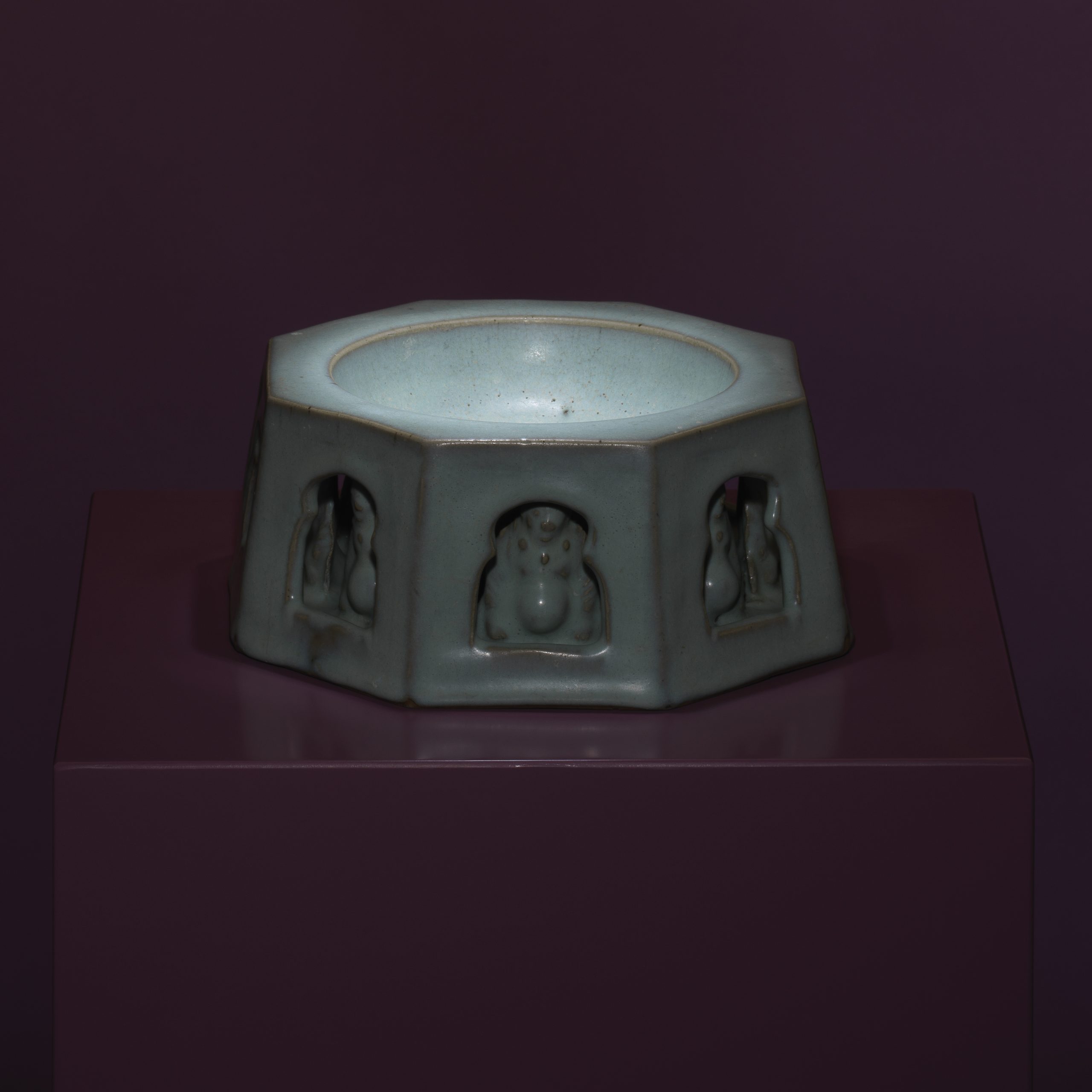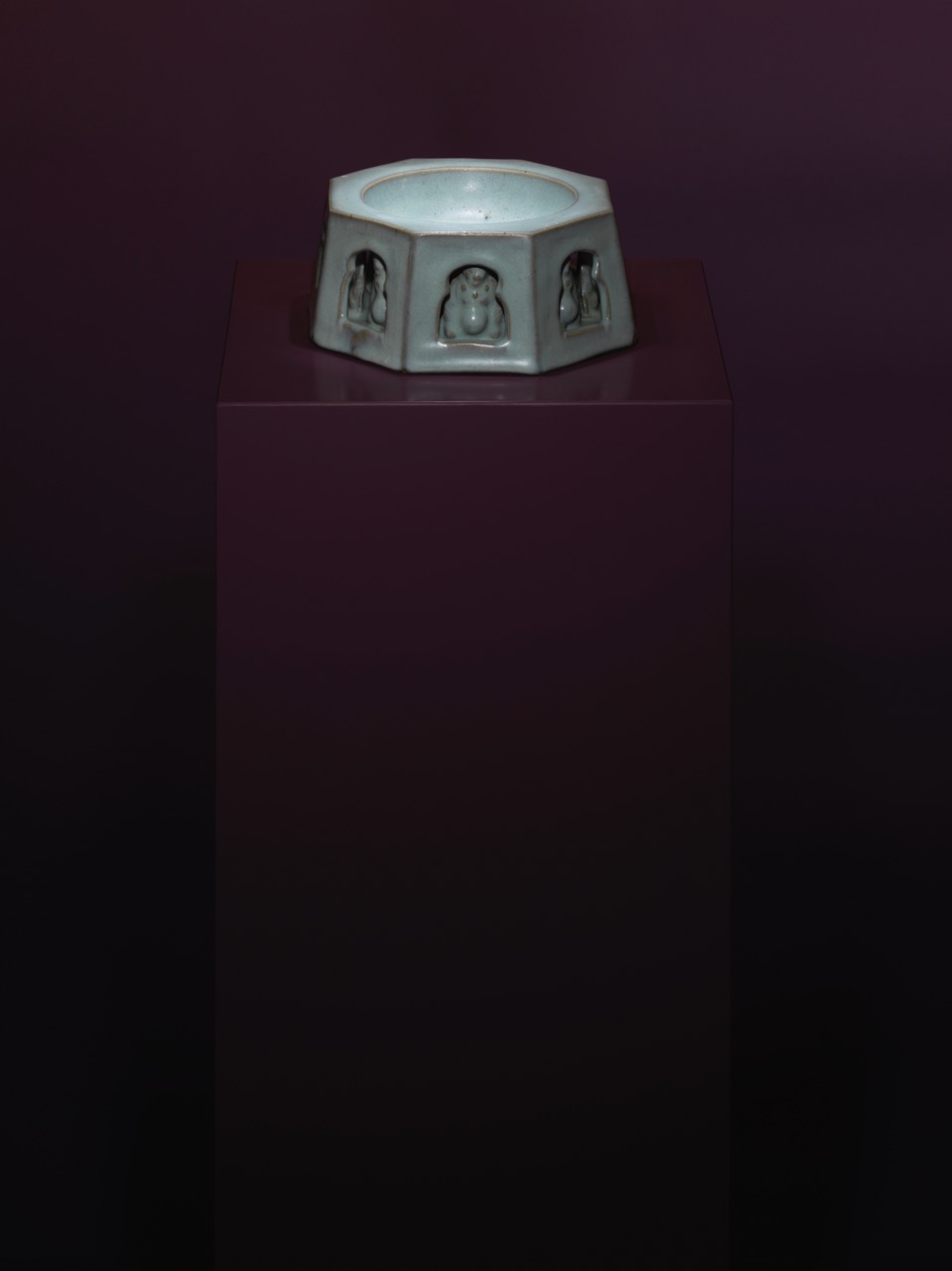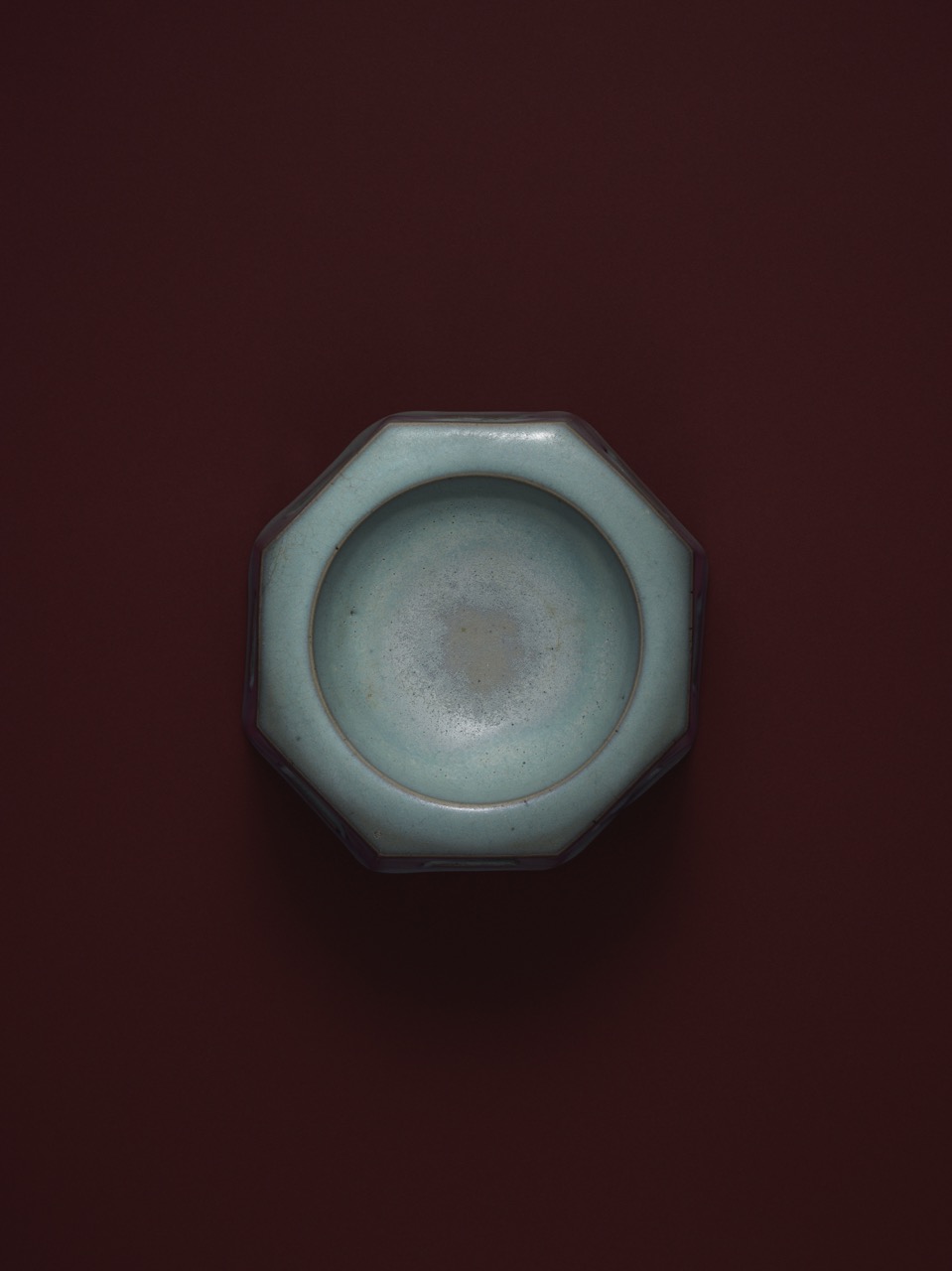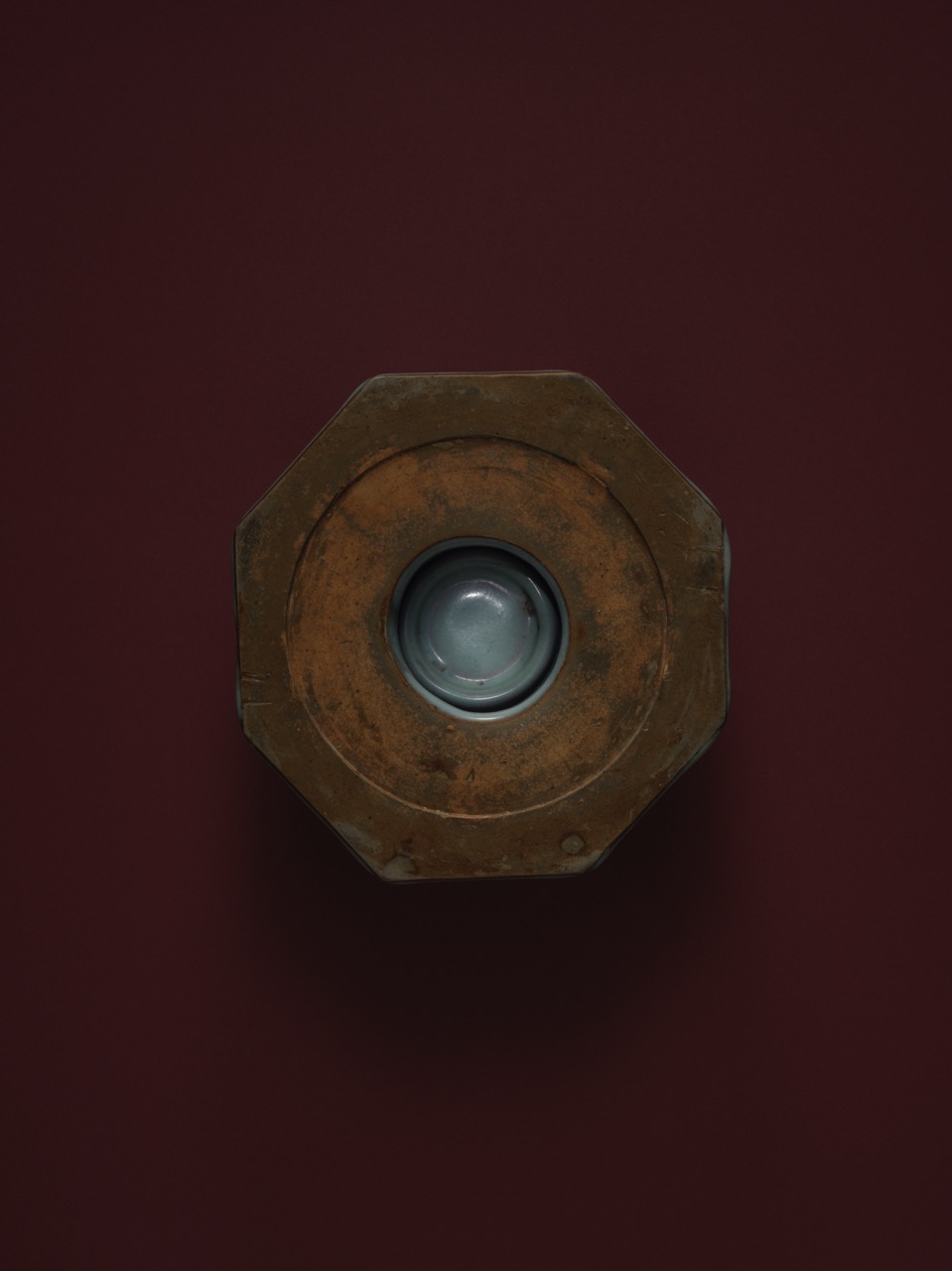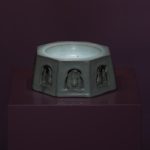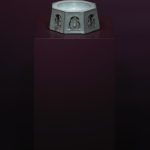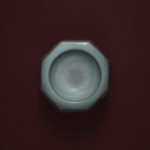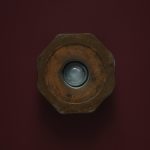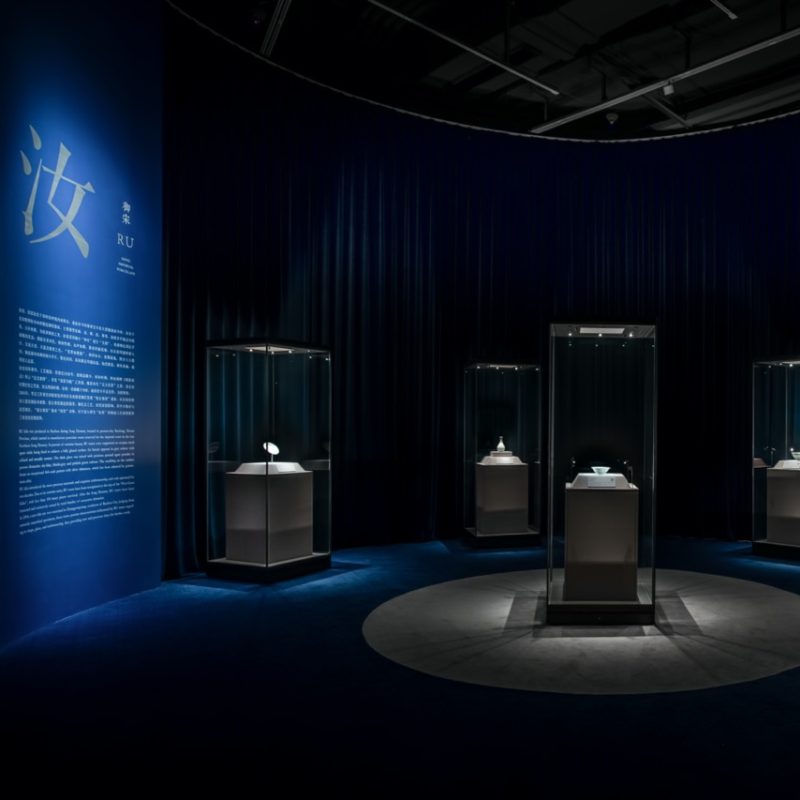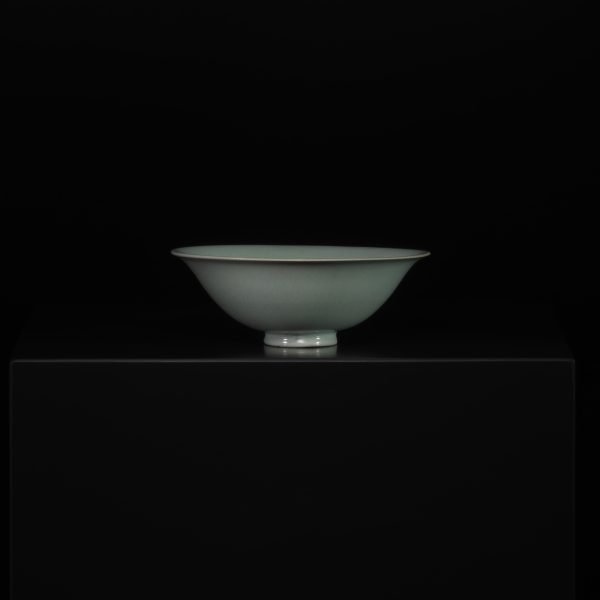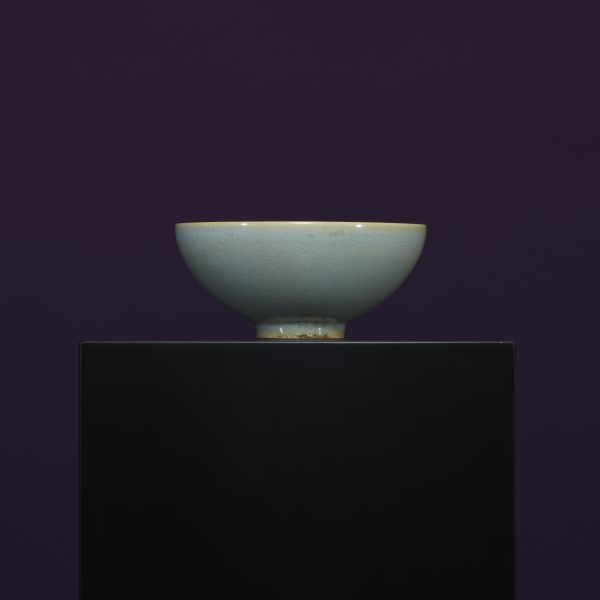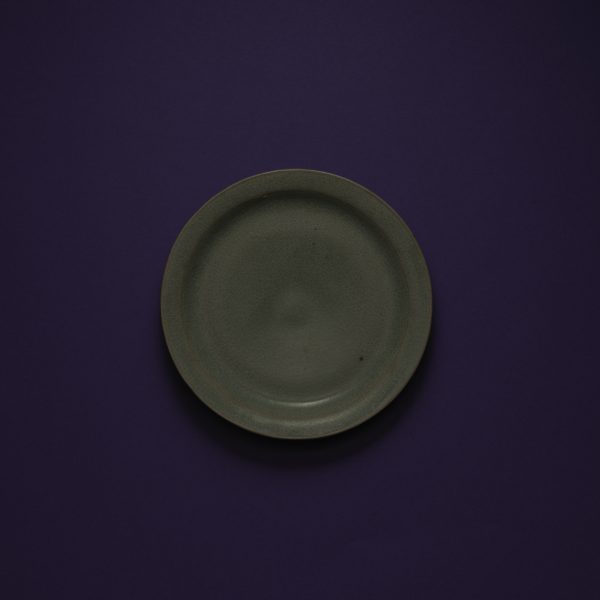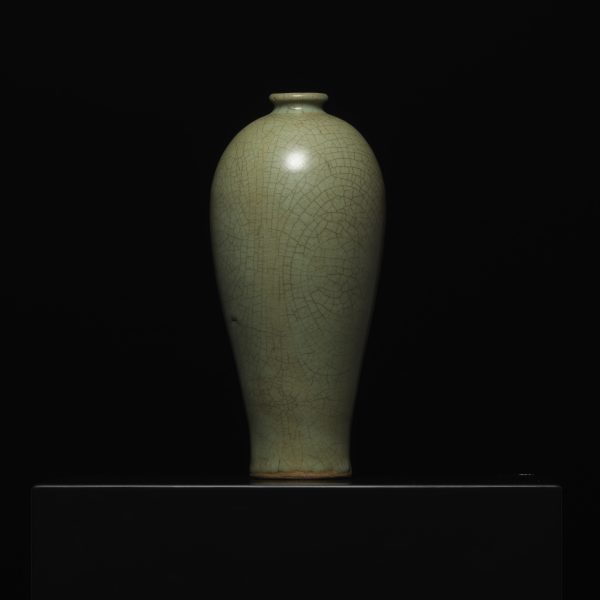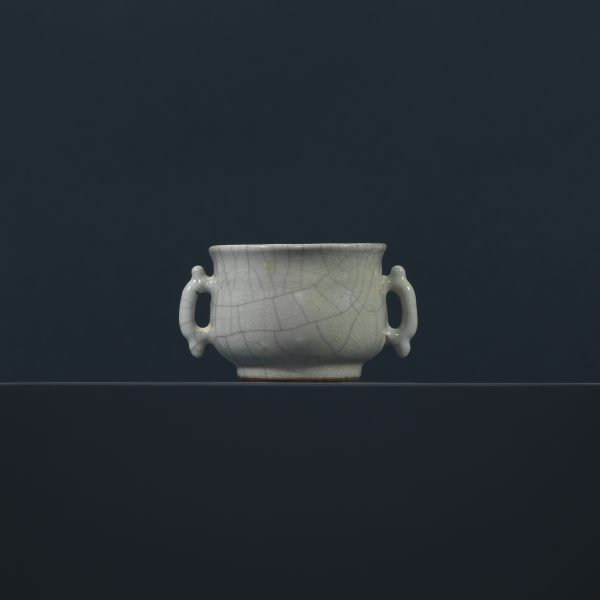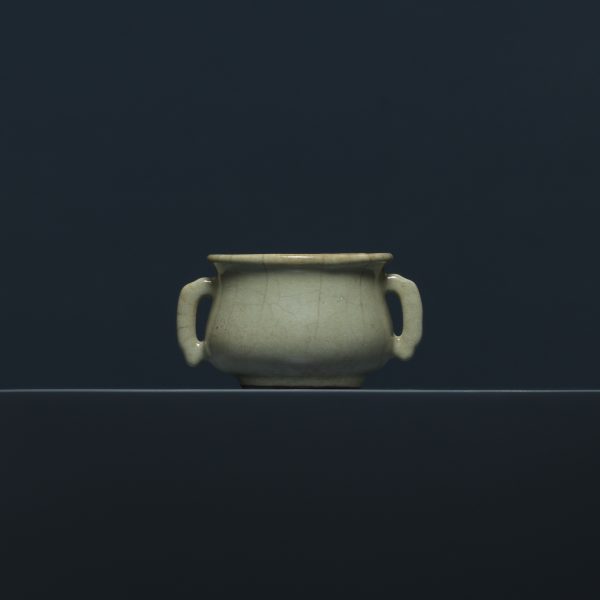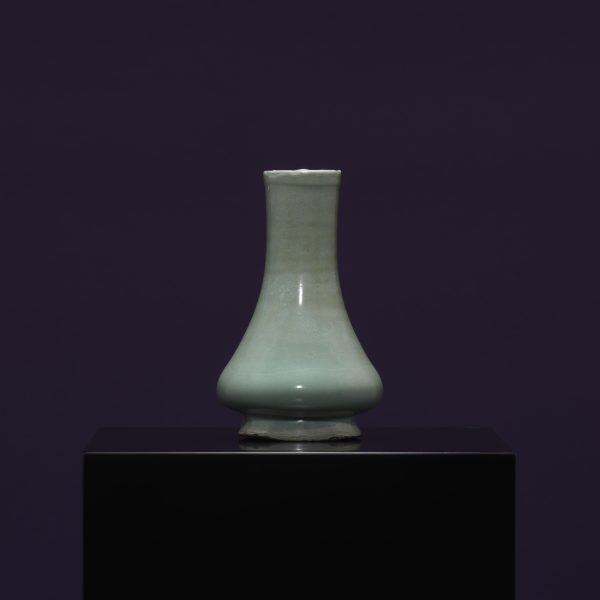A Clair-de-lune-glazed JUN Eight-faceted Buddhist Pedestal
Northern Song Dynasty
960-1127
- Object Type:ANCIENT CHINESE ARTCERAMICS
- Medium:Porcelain
- Year:Northern Song Dynasty (960-1127)
- Size:Height 9.20 cm, Rim Diameter 20.06 cm, Bottom Diameter 23.50 cm
Description
Potted in an octagonal shape, with its body flared out downward, the pedestal is combined with two parts (interior and exterior): it has a flat head with a round chamber caved in to form a bowl-shaped interior with a bulging belly and a round bottom; the exterior is trimmed into octagonal trapezoidal form carved with door-styled niche on each side (with a vault roof, a square base, and a girdled waist), in which a Buddhist statue is placed respectively. The pedestal is divided into three decks: the interior part is hollow and attached to the foot ring of the inner bowl; the middle part is trimmed thinner like a jade disc; and the exterior part is formed in square shape with a globular chamber, and supported on a short foot ring. The exterior wall, Buddhist statues and the inner bowl are fully covered in clair-de-lune glaze, leaving the foot bottom unglazed to expose its light brown biscuit.
Such double-decked Buddhist pedestal can also be seen among porcelain wares in the Song Dynasty from kiln GUAN and kiln LONGQUAN, which are mostly unadorned. This piece, also known as “Eight-sky Gods”, presents deities governing eight directions of the universe. According to the Annotated Mahāvairocana Tantra (volume five), “stylites shall protect the eight directions of the universe; whatever made into mandala turns and transforms along with it, from Indra in the East to Yama in the South, and Varuna in the West, and Vaisravana in the North, and then Isana in the Northeast, Agni in the Southeast, Raksasa in the Southwest, Vayu in the Northwest, accordingly.” Therefore, it is an extremely rare Buddhist instrument.


